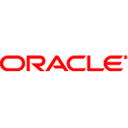Public Cloud software: purchase guide
Public Cloud Software in 2025: Scalable Infrastructure for a Connected World
What Is Public Cloud Software, Really?
Public cloud software represents the foundation of modern digital infrastructure. Unlike private clouds, which are reserved for a single organization, public cloud solutions offer computing resources—like storage, processing power, and networking—over the internet to multiple users simultaneously. But this isn’t just about hosting websites or backing up files. Public cloud software is about flexibility, scalability, and access to cutting-edge technologies without the need for massive upfront investments. Whether you're a startup deploying an app or a global enterprise running complex workloads, public cloud platforms provide the agility and power needed to stay competitive.
Why Public Cloud Software Matters in 2025
In 2025, businesses are facing increasingly complex IT demands, tighter budgets, and greater expectations for performance and security. Public cloud software has become essential—not just as a tool for scalability, but as a strategic asset. The cloud enables rapid deployment, global reach, and constant innovation through services like AI, machine learning, analytics, and serverless computing. Moreover, it supports remote and hybrid workforces, ensures business continuity, and allows organizations to focus on their core value instead of infrastructure maintenance. As compliance and data protection regulations evolve, top-tier public cloud providers also bring enterprise-grade security and governance tools to the table.
How Public Cloud Software Works Behind the Scenes
At its core, public cloud software is built on virtualized infrastructure. Providers operate massive data centers that host computing resources distributed across multiple physical servers. These resources are abstracted and delivered to users on demand, allowing for virtually limitless scalability. When a business subscribes to a public cloud service, they access computing power, storage, and software environments through a web interface or APIs. Sophisticated orchestration tools automatically manage resource allocation, load balancing, data redundancy, and failover. Modern public clouds also use AI to optimize performance, predict resource needs, and detect anomalies for enhanced security and efficiency.
The Top Public Cloud Software for 2025: Deep Dive Comparison
| Software |
Key Features |
Pricing |
Reviews |
Free Trial / Demo |
| CLOUD IKOULA ONE |
Versatile public cloud solution for businesses managing compute resources with ease. |
On request |
No user reviews |
Free version, trial, and demo available |
| Amazon Web Services |
Leading cloud platform offering robust scalability, cost-efficiency, and enterprise security. |
On request |
No user reviews |
Free version, trial, and demo available |
| OVH Public Cloud |
Flexible, scalable infrastructure for businesses of all sizes and dynamic workloads. |
On request |
No user reviews |
Free version, trial, and demo available |
| Oracle Cloud Infrastructure |
High-performance computing, integrated security, and storage versatility for mission-critical apps. |
On request |
No user reviews |
Free version, trial, and demo available |
| Cloudwatt |
Scalable storage and performance-focused cloud service with flexible pricing. |
On request |
No user reviews |
Free version, trial, and demo available |
Best Practices for a Successful Public Cloud Implementation
To get the most out of public cloud software, start by auditing your current infrastructure and defining key business objectives. Choose a provider that aligns with your compliance requirements and supports hybrid or multi-cloud strategies if needed. Plan for data migration carefully, ensuring minimal downtime and data integrity. Use built-in monitoring tools to track performance and security metrics, and automate where possible to reduce operational overhead. Invest in staff training to empower teams to manage cloud environments effectively. Finally, implement robust identity and access management (IAM) policies and stay up to date on evolving security best practices.
Where Public Cloud Software Is Headed in 2025: Key Trends
The public cloud landscape in 2025 is shaped by increased automation, deeper AI integration, and sustainability efforts. Serverless architectures are enabling faster development cycles with reduced operational complexity. AI is optimizing workload placement, energy usage, and cybersecurity. Sustainability has become a core focus, with providers investing in green data centers and carbon-neutral operations. Edge computing is also gaining momentum, pushing processing power closer to users for low-latency applications. And finally, cloud sovereignty is on the rise—driven by regional data governance laws—leading to the emergence of localized cloud zones.
Powering the Future with Public Cloud
Public cloud software is more than a delivery model—it’s the backbone of modern digital innovation. In 2025, organizations looking to scale, optimize, and secure their operations are turning to cloud leaders like CLOUD IKOULA ONE, Amazon Web Services, OVH, Oracle Cloud Infrastructure, and Cloudwatt. With the right strategy, these platforms empower businesses to operate more efficiently, innovate faster, and serve customers better in an ever-connected world. As the pace of transformation accelerates, public cloud adoption isn’t just smart—it’s essential.












